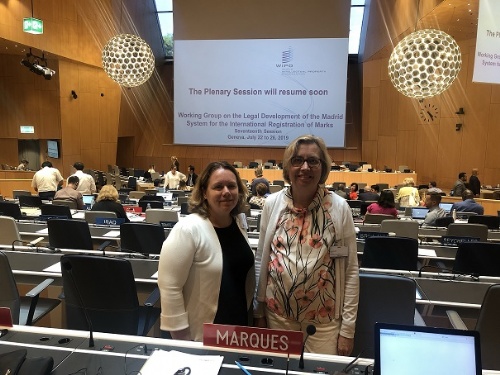Now in its twelfth year, Class 46 is dedicated to European trade mark law and practice. This weblog is written by a team of enthusiasts who want to spread the word and share their thoughts with others.
Click here subscribe for free.
Who we all are...
What is the ideal trade mark registration procedure?
In the first of two blog posts, Tove Graulund provides a personal perspective on which ingredients make the optimal trade mark application and opposition system. Do you agree with her? Join the debate by clicking on the “Comment” button below and submitting your views.
During the years that I have been involved with MARQUES, I have been engaged in discussions with colleagues again and again on how a trade mark is best registered. I have found that there is not one preference on how the best procedure should run. We have discussed it a number of times in different teams and have debated the topic with other associations and organisations over the years. As trade mark professionals, we still return to the issues again when something triggers a discussion. It is clearly a topic that is close to the heart and probably because it is something that all of us have tried as least once in our career.
 |
| Jessica Le Gros and Tove Graulund representing MARQUES at the Madrid Working Group in 2019 |
MARQUES has taken a formal position on several steps as part of the EU Trade Mark Reform process where I led the taskforce (2010-2016) and even before then it was quite an intense discussion topic in Europe – even now it is not fully harmonised. Since 2005, I have attended almost all of the Madrid Working Group meetings (formally the Working Group on the Legal Development of the Madrid System for the International Registration of Marks) at WIPO where numerous harmonisation efforts have been made over years with several successes.
I have come to realise that we all find that the way things are done in our home country is the best way. Almost all of us. I suppose that we are animals of habit, which would not be so strange, and when I look at myself, I would have to plead guilty. Still, I have seen and heard a lot over the years, and I would like to share my thoughts with you. I would be delighted to be told that I am missing a point and learn something new.
So, what is the ideal trademark registration procedure? This is what I think – it’s not really rocket science, but it is based on years of experience.
Application process
An applicant files a trademark application. The Office examines for absolute grounds – is the trademark distinctive, are the fees paid etc? – and refuses or accepts the application. The decision is reported to the applicant who has two months to respond in case of a refusal. The applicant responds, limits the list of goods or whatever is required, and the Examiner looks at the arguments and issues a new decision. The applicant is given another two months, and after the additional arguments, the Examiner issues the final decision.
 |
| EUIPO: a model procedure? |
You will have noticed that I only mention absolute grounds and not relative grounds (prior rights), and I admit to being very much a European Union citizen on this point. It is inconceivable that the EUIPO should examine for relative grounds – it would be a mammoth task and as much as I believe in the Examiners in Alicante, the risk of the examination going wrong is too big. I think the IP Offices in the EU should follow the same procedure as the EUIPO so that we have the same system. It is a shame that we did not manage to harmonise this fully at the Reform and that we have countries such as Sweden who still examine for relative grounds, but it is what it is. Experienced applicants will know how to navigate, and SMEs will be confused.
Deadlines and times to respond is an area that needs harmonisation, and it is fortunately on the agenda for the next Madrid Working Group meeting. I believe that two months is reasonable. If you know what to respond, you can do it sooner, but if you need to gather evidence of (for instance) secondary meaning, it can be quite complicated and time consuming. An applicant should have access to extension of time of this type of deadline, and it could be more than once – all within reason. China has 15 days, and this is way too short and needs to be changed. One month could be an option, especially if you can do extensions, but I do find that two months works very well, and there is nothing stopping an applicant from filing a response in two weeks.
Most countries around the world still examine for relative grounds, and it would be unrealistic to imagine that this will change. There are advantages to this too, especially for the smaller businesses that only need protection in their home market. One thing to note here is that all Offices should accept consents from owners of prior rights and leave it to businesses to decide if the dispute is real or not.
By Tove Graulund of Graulund Consulting. Tove is a member of the International Trade Mark Law and Practice Team and a former Chair of MARQUES. The second part of this post, covering opposition procedures, will be published next week. In the meantime, please post your comments and observations by clicking on “Post a Comment” below
Posted by: Blog Administrator @ 16.20Tags: Trade mark registration, EUIPO, Madrid System,


 Sharing on Social Media? Use the link below...
Sharing on Social Media? Use the link below...Perm-A-Link: https://www.marques.org/blogs/class46?XID=BHA4877

